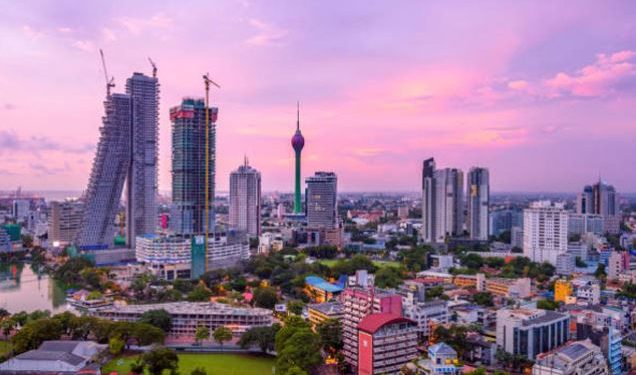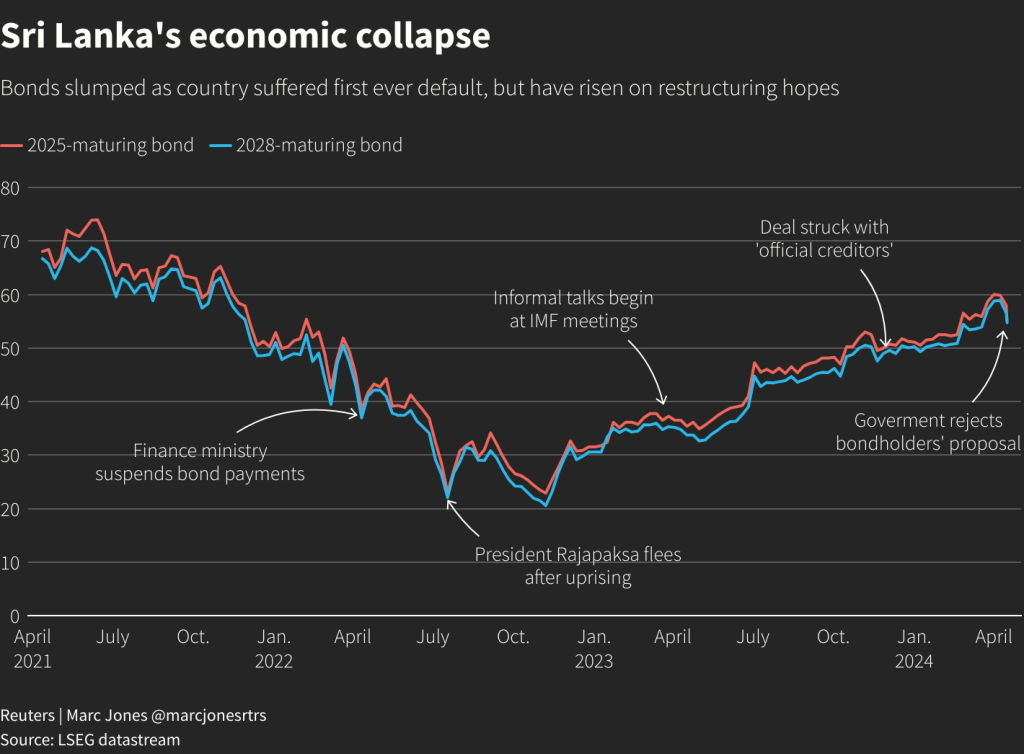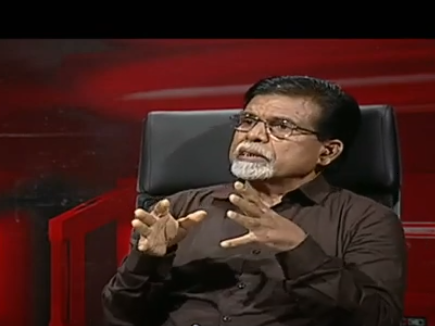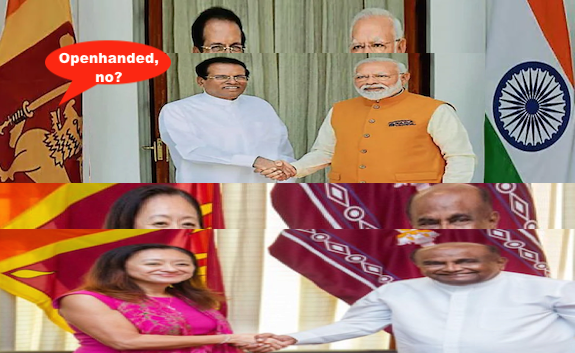By David Hearst
Zionism wants large war to cover the Genocide, and the West needs World War 3 to stall the BRICS and Rise of the Global South in the Asian 21st Century
Staunch allies calling themselves friends of Israel are beginning to realise they are also friends of the murderers of western aid workers, friends of genocide and friends of fascism
Six months on, the entire edifice that allowed Israeli forces to kill more than 33,000 Palestinians and wound another 75,000, displace a population of over 2.3 million and then starve them, demolish the north of Gaza, dismantle the health service and signal that it would do the same in Rafah for the next six months, is tumbling down.
Political leaders who framed this carnage as Israel’s right to defend itself, journalists who peddled fictional horror stories about beheaded babies and mass rape on 7 October, and editors who day in, day out ignored stories about aid convoys being targeted by Israeli forces are rushing for cover.
All the arguments they used to maintain this slaughter are crumbling in their hands – that this is a just war, that Israel must be allowed to finish the job, that the action taken is proportionate, that the legal process in the International Court of Justice hinders peace talks and can be ignored, that the UK and US can simultaneously admonish Israeli Prime Minister Benjamin Netanyahu and continue to arm him.
The dam has burst. The Foreign Secretary Lord Cameron can no longer play cat and mouse with Foreign Affairs Select Committee chair Alicia Kearns, who revealed a few days ago that government lawyers knew that Israel had breached international humanitarian law.
More than 600 prominent lawyers, academics and former judges, including former Supreme Court president Lady Hale and two other former justices in the court, signed a letter warning the UK government that it was breaching international law by continuing to arm Israel.
Former Foreign Office minister Sir Alan Duncan asked how could Israel still be considered an ally of the UK, and called for its chief supporters Lord Polak, Lord Pickles and Tom Tugendhat, to be held to account for their support for Israel.
I think that anything in support of what is becoming a total catastrophe in Gaza is morally unacceptable and what we have to accept is it’s not just what they’re doing now is wrong – it’s what Israel has been doing for years has been wrong because the Israeli Defence Force does not follow international law,” he told LBC.
It has been backing and supporting illegal settlers in the West Bank who steal Palestinian land and it is that land theft, that annexation of Palestine, which is the origin of the problem, which has given rise to the Hamas atrocity and the battles we’re seeing.”
Tipped over the edge
The mood is indeed changing. A poll conducted by YouGov found that 56 percent of UK voters are now in favour of a ban on the export of arms and spare parts, with 59 percent saying Israel was violating human rights in Gaza.
The poll found strong support for an arms export ban among voters intending to vote Labour at the next election. An overwhelming 71 percent to nine percent of those intending to vote Labour backed an arms export ban, while Lib Dem voters supported a ban by 70 percent to 14 percent and Conservative voters by 38 percent to 36 percent.
Asked if Israel was violating human rights, Tory voters by two to one said Israel was doing so. Duncan was voicing the mood of his party.
Cameron has been flushed out into the open. He has to choose: admit that the government is indeed in breach of international law, and could be prosecuted as such – including him personally – or stop the arms trade.
The letter is not the work of pro-Palestinian activists. It’s the cream of the legal establishment speaking, figures such as the former Supreme Court justices Lord Sumption and Lord Wilson, the former lord justices of appeal Sir Richard Aikens, Sir Anthony Hooper, Sir Alan Moses and Sir Stephen Sedley.
Read also:
US deploying 3,000 more troops to Middle East
Founders and partners of top law firms in the UK as well as professors from the University of Oxford, London School of Economics and King’s College London are included.
And what exactly tipped everyone over the edge this week? What tipped the Israel-supporting tabloids to turn on it?
A lot had happened on Monday 1 April before that attack on the World Central Kitchen (WCK) convoy. And little of it ruffled any feathers.
The morning broke with the withdrawal of Israeli forces besieging al-Shifa hospital, leaving the hospital in ruins and a large pile of bodies behind. The Israeli army congratulated themselves on a textbook operation.
Amazing battlefield achievement,” proclaimed former prime minister and special forces commander, Naftali Bennett, on X (formerly Twitter). The results are remarkable: 6,000 civilians were evacuated by the IDF to keep them safe. 200 Hamas terrorists were killed. 500 Hamas terrorists have been captured. *No civilian was killed*. Not one.”
This was not the experience of Dr Amina al-Safadi, who was given hours to move patients out of her department. Of them, 16 patients in intensive care died.
On the second day they forced us to move all patients from where we were, the orthopedic department in building four to the reception area and they gave us a set time,” she said. A lot of them died. They were in intensive care and we couldn’t do anything for them.
Three days ago they gave us these wristbands. They said they’re for the snipers and anyone leaving the building without them will be targeted.”
Nor was it the experience of Rafik, an emaciated, skeletal youth who could barely lift his head.
They tortured us there. There was no food or water,” he said. We stayed without food or water for five days. We were dying. We lived in agony. There were no dressings for our wounds. There was no food. I can’t take it anymore.”
Patients, doctors, and even the dead, whose corpses were dug up by bulldozers, were all the same to the besiegers, who left a wasteland behind them.
Two of Gaza’s most respected doctors, mother and son, were among the dead. Ahmad al-Maqadmeh, a Palestinian plastic surgeon in his early 30s, and his mother, Yusra al-Maqadmeh, a general practitioner, were found alongside the corpse of their cousin Bassem al-Maqadmeh at the roundabout next to the Carrefour Mall in Gaza City, a short walk from al-Shifa.
Had they been shot by snipers? A Palestinian mother was overwhelmed by the devastation. All she wanted was to find the body of her son.
Please find out where he is,” she addressed everyone around her. Where, dear God? Please help me find him. I want to gather his bones. I don’t want to leave him here. Please find him, I beg you.”
Al-Shifa was once the largest hospital in the occupied territories. It catered for 30 percent of the needs of Gaza. It is no more. If the plan all along was to make Gaza uninhabitable, the destruction of al-Shifa was indispensable to that project.
That was just the morning news on Monday. Much more was to follow.
Another red line crossed
As if to rub out the record of such horrifying scenes, Netanyahu pledged to shut down the regional office of Al Jazeera.
This was another nail in the coffin of a negotiated peace. Israeli officials have until now stopped short of taking action against the jewel in Qatar’s crown, mindful of Qatar’s role in funding construction projects in Gaza and its part in the negotiations with the political wing of Hamas, whose leadership it houses.
Al Jazeera, several of whose journalists have been deliberately killed by the Israeli army in Gaza, rejected the accusation that it was a threat to Israel’s national security as a dangerous and ridiculous lie”.
But just reporting the truth of what is taking place in Gaza hurts Israel.
Communications Minister Shlomo Karhi accused Al Jazeera of encouraging hostilities against Israel. It is impossible to tolerate a media outlet, with press credentials from the government press office and with offices in Israel, acting from within against us, certainly in wartime,” he said.
Read also:
Rafeef Ziadah – We Teach Life, Sir!
This is how a state that we are constantly told shares our values behaves when push comes to shove. Freedom of expression? Tell that to Shireen Abu Akleh, Samer Abu Daqqa, Hamza al-Dahdouh and countless others who have paid for their reporting with their lives.
Then came the Israeli air strike that destroyed an Iranian consulate building in Damascus, killing Mohammad Reza Zahedi, the second most senior commander in the Iranian Revolutionary Guards to die since then-US President Donald Trump ordered the assassination of Qassem Soleimani.
This time, the US hurriedly told Iran they played no part in Israel’s strike, but the attack marked another red line crossed in hitting an embassy or consulate.
Following the same line that claimed al-Shifa was not a hospital but a command centre for Hamas, an Israeli military spokesperson, Daniel Hagari, told CNN: I repeat, this is no consulate and this is no embassy. This is a military building of Quds forces disguised as a civilian building in Damascus.”
But Israel knew exactly what it had done. And what line it was crossing. It wants to provoke Iran into a war. According to the US State Department, an attack on an embassy is considered an attack on the country it represents.
But Israel also knows it will not use the same logic when a synagogue or Jewish centre is hit by an Iranian proxy in revenge. It will claim no responsibility for putting the lives of Jews around the world in danger. But that is surely what it is doing.
‘Indefensible… horrific’
And then, and only then, came the triple drone strike which killed seven World Central Kitchen aid workers, three of them British.
The front pages in Britain, Canada, Poland and Australia (the home countries of the dead aid workers) reacted in outrage. Even the staunchly pro-Israel the Sun, owned by the Murdoch family’s News UK group, went ballistic.
SBS hero John Chapman and former marine James Henderson were travelling in a clearly marked car, operated by charity World Central Kitchen, when the convoy was struck with three missiles fired by an IDF [Israeli army] drone,” it wrote.
Al Jazeera’s Sanad verification agency said the killings were intentional. Three WCK vehicles were targeted after the group had delivered 100 tonnes of food aid to a warehouse in Deir al-Balah.
The second vehicle was targeted approximately 800 metres away from where the first was hit,” its report read.
The third car was targeted about 1.6km away from the second car, based on its location after being bombed.” The WCK said that their convoy was hit despite coordinating movements” with the Israeli army.
So how was this repeated attack on the convoy different from all the other attacks on Unwra convoys which resulted in hundreds dead and which sparked the siege of al-Shifa?
The only difference is that seven dead aid workers were British, Polish, Australian and Canadian, and that the founder was a celebrity chef.
Nick Ferrari, a presenter on LBC, said: This is indefensible… Every single fact is horrific… from one friend to another, this has to stop.”
But so surely have all the other strikes on aid convoys been indefensible. The only thing that was different this time was the nationality of the people in the cars – all from nations that support the continued war.
Ferrari could have come to the conclusion that Israel’s actions in targeting aid convoys were indefensible from day one of this war and said it on air every day since. What stopped him? Because he describes himself as a friend of Israel. A friend of what, he may well be asking himself?
A friend of apartheid? A friend of genocide? A friend of mass starvation? A friend of settlers setting fire to Arab villages? A friend of religious fanaticism? A friend of fascism?
Biden’s fake indignation
But no reaction can be more inadequate than the fake indignation mouthed by a geriatric incumbent US president seeking re-election.
Read also:
Saudi Arabia: MBS should enjoy his moment in the sun. It won’t last
Joe Biden has said a bombing campaign on Rafah, where 1.5 million refugees have been corralled, would cross a red line”. He said the attack on the World Central Kitchen convoy, showed that Israel has not done enough to protect” aid convoys, as if it has ever done anything more than bottle up the aid at the borders and bomb its distribution consistently.
Turn down the volume, ignore the statements of concern coming from the White House and State Department, and focus solely on Biden’s actions.
Biden has the power to halt all armaments, including the supply of 2,000lb bombs, or indeed the power to set strict limitations on their use. He has done neither.
He has shown no hesitation in doing this with Ukraine, which is not permitted to fire US-made weapons into Russia. Biden has set no such conditions on Israel.
The opposite is happening. As he publicly speculates on replacing Netanyahu, he is considering selling Israel up to 50 new F15 fighters, 30 Aim-120 advanced medium-range air-to-air missiles, as well as Joint Direct Attack Munition kits, equipment that can change dumb bombs” into precision-guided weapons, as Politico first reported.
The new F-15s aren’t for bombing Gaza. They are for aerial jousts with Iran and its many drones.
What else has Biden done this week? Send Jake Sullivan, his national security adviser, to pressure Saudi Arabia’s Crown Prince Mohammed bin Salman to sign up to the Abraham Accords.
Contagious mood of revolt
If Biden seriously thinks that amid the mayhem created by Israel’s sixth-month war, a signature on a piece of paper is going to be enough to staunch the revolt that is taking place in Arab hearts from Amman to Morocco, he is even more delusional than the professional president watchers on Capitol Hill think.
The kingdom of Jordan is staring down both barrels of a shotgun, its government unable to decide what to do: face down the rallies that have been rocking Amman for over a week by arresting its organisers and speakers; or praise the protests as an expression of the national mood.
Former Jordanian minister of information, Samih al-Maaytah, speaking to the Saudi channel Al Hadath, has tried to point the finger of blame at Khaled Meshaal, the former head of Hamas’s political wing, who survived an assassination attempt by Mossad in Jordan.
But as Maaytah knows only too well, the protests have become much larger than a mere expression of solidarity with Gaza. They are displays of strength by the clans, in which East Bankers outdo Palestinians in their challenge to the king’s authority.
The mood of revolt is contagious, just as it was at the start of the Arab Spring. The rallies in Amman are echoed by mass demonstrations in Morocco and the syndicates in Cairo. The dictators who suppressed the Arab Spring are worried and have begun giving each other support.
It’s clear what is happening, and what will happen if Israel is allowed to continue this war for another six months.
It takes a lot to admit that a lifelong dream of a homeland for Jews in the Middle East is turning into a nightmare. But for all those who support this venture, that is what is happening.



 අමෙරිකානු අධිරාජ්යය බිඳවැටෙන සෑම විටම ඔවුන් විසින් ලෝකයේ යුදමය තත්ත්වයක් නිර්මාණය කරන බවද, ඊශ්රායලය ත්රස්තවාදී රාජ්යක් ලෙස අමෙරිකාව භාවිත කළේ ඛනිජ තෙල් වෙනුවෙන් අරාබි මුහුද, රතු මුහුදේ ගැටලුවක් නිර්මාණය කිරීමට බවද වෛද්ය වසන්ත බණ්ඩාර මහතා පවසයි.
අමෙරිකානු අධිරාජ්යය බිඳවැටෙන සෑම විටම ඔවුන් විසින් ලෝකයේ යුදමය තත්ත්වයක් නිර්මාණය කරන බවද, ඊශ්රායලය ත්රස්තවාදී රාජ්යක් ලෙස අමෙරිකාව භාවිත කළේ ඛනිජ තෙල් වෙනුවෙන් අරාබි මුහුද, රතු මුහුදේ ගැටලුවක් නිර්මාණය කිරීමට බවද වෛද්ය වසන්ත බණ්ඩාර මහතා පවසයි.